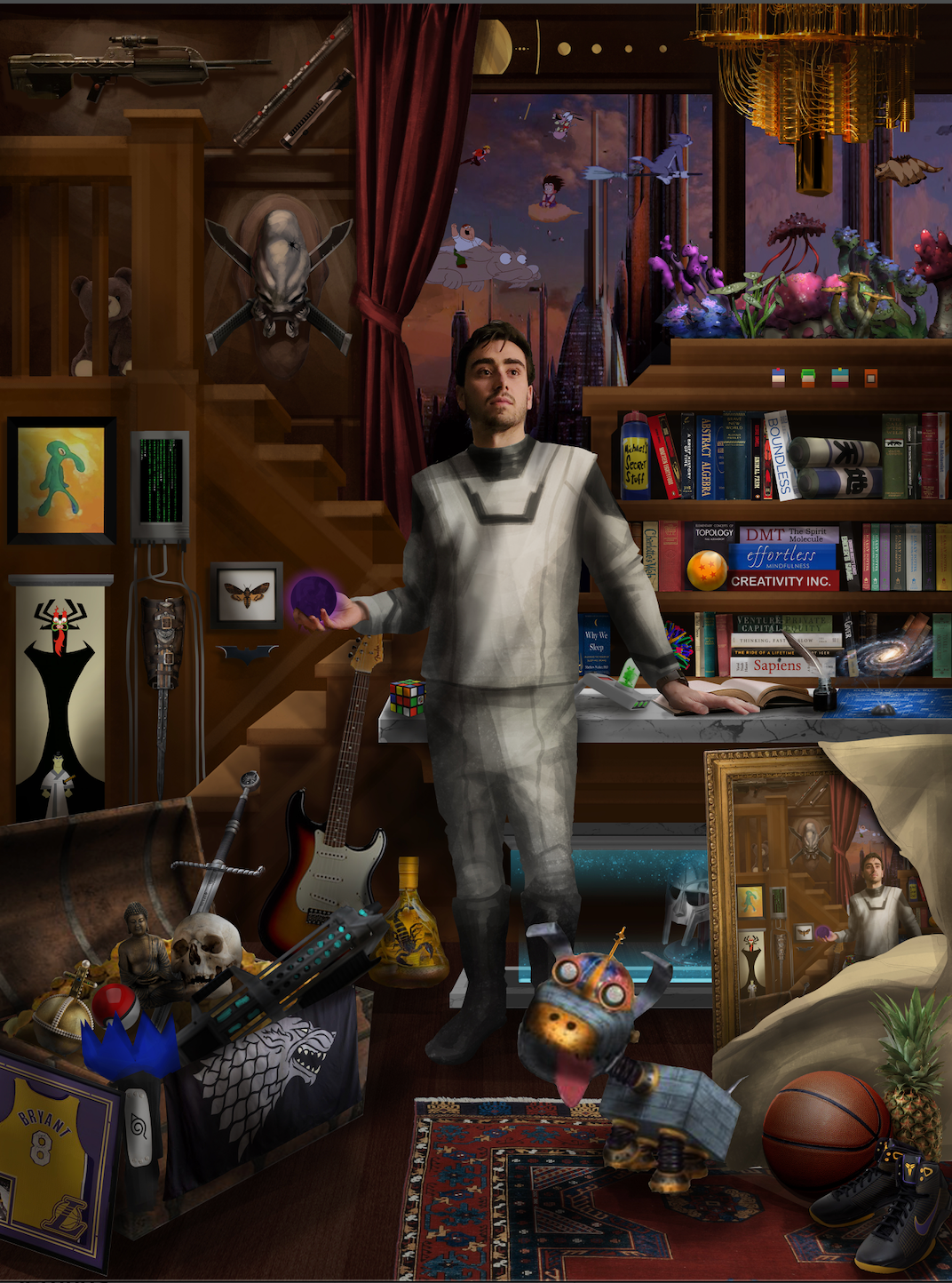Hi there, I'm Clement
I’ve shared my ideas with thousands across 40 countries, bridging science and the humanities. My background spans 45+ patents and $11B in global deals, but my true focus is exploring the science of the first person—applying rigorous principles to unlock the mind’s mysteries.
The Idea Space is more than an app, a book, or a set of cards—it’s a scientific framework to explore and understand the mind. It represents the first practical solution to Einstein’s field equation in 60 years, offering a physics-based model for the mind. It all began when I set out to write about ideas that withstand the test of time—math, history, and physics. Through that journey, the Idea Space emerged as the silver lining, uniting timeless principles to help us navigate meaning, creativity, and our place in the universe
Instead of telling you what I’m about, here’s a painting that captures many of the things that bring me joy in life. From the books I’ve read to the TV shows that provided inspiration, each detail reflects a part of who I am. I currently live in Los Angeles, California.




















